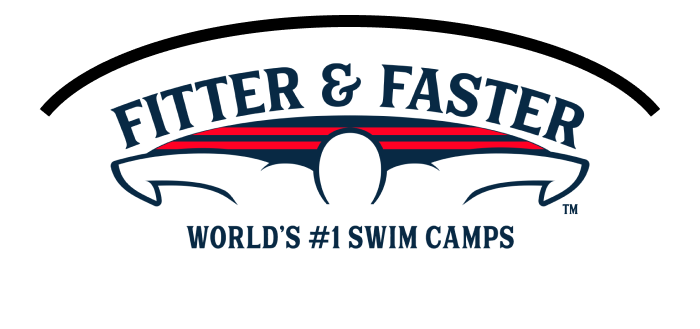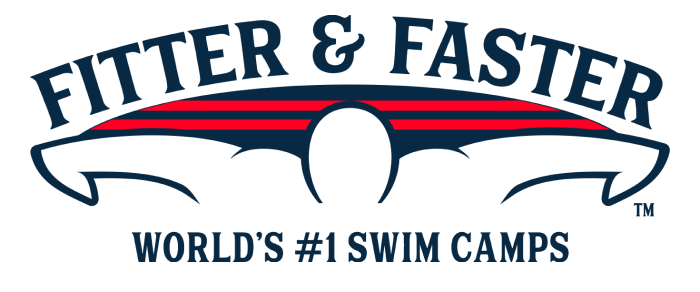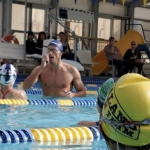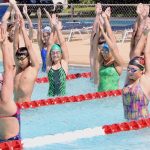Past Clinic: Victor, NY Fall Swim Camp for Ages 13 & over
Victor Aquatics Center
953 High St,
Victor,
NY 14564
A description of what was covered at this past clinic is below the upcoming clinics.
Upcoming Swim Clinics and Camps
Within 250 miles of Victor, NY.
Past Clinic
Introduction
Fitter & Faster is returning to the Victor Aquatics Center in Victor, NY to produce a 3-day swim camp on Sept 29-Oct 1, 2023! This swim camp page is for swimmers ages 13 & over. If you are looking for the swim camp page for ages 9 to 12, CLICK HERE!
VICTOR, NY FALL SWIM CAMP (Ages 13 & up):
-> DAY 1: Starts, Underwaters & Breakouts
-> DAY 2: Flip Turns, Open Turns & Finishes
-> DAY 3: Fast Individual Medley Racing & the "Crossover Turn"
Scroll down for details on the curriculum!
-> Availability in each session is limited to ensure the best learning experience!
-> SAVE when you purchase the “Full Camp Bundle” for your swimmer!
START TIMES:
- DAY 1 (Friday): Check in 6:15 PM. Camp: 6:30-9 PM
- DAY 2 & 3 (Saturday & Sunday): Check in 12:45 PM. Camp: 1-4 PM
Suggested Participants
Our top priority is to provide a world-class learning experience for all participants at all of our camps. This camp has sessions for swimmers ages 13 & up. Participants will range from a couple years of competitive swimming experience to AAAA times and faster. If you are the parent of a child under the age of 13, Click Here!
Curriculum
The momentum generated from an explosive start and turns are the FASTEST that elite swimmers are moving in a race! The more efficient, powerful and hydrodynamic your swimmer is, directly impacts their speed and distance they travel in the water before taking their first stroke! Participants will also work with elite clinicians to develop a deeper understanding of high-performance skill that will help them improve their individual medley times. This swim camp will be led by Elite Clinician & Olympian: Joao De Lucca!
Day 1: EXPLOSIVE STARTS, UNDERWATERS & BREAKOUTS (Sept 29)
The better a swimmer’s technique is off the starting block, the more speed they will carry into the water. Day 1 of this swim camp will help your swimmer improve their start, underwater dolphin kicking and breakouts! This sequence is not only the fastest part of every race, but it is also the part of the race in which elite swimmers cover the most ground with the most efficiency.
- BLOCK STARTS: To ensure an explosive start, a swimmer needs to set themselves up properly on the block. The elite clinicians will work with participants on the optimal positioning of your swimmer’s entire body to allow for a quick reaction time and optimal speed.
- STREAMLINE: The streamline - if done properly - will be the fastest a swimmer travels while in the water. Proper streamlines are even faster than underwater dolphin kicking. Even the most elite swimmers in the world are constantly working on improving their streamline. Your swimmer will get tips to improve their streamline and a better appreciation of what they need to do on every single wall in practice and in races.
- INITIATING UNDERWATER DOLPHIN KICKING: Elite swimmers want to maximize their streamline on every single lap. So, they don’t want to start their underwater dolphin kicking while they’re still achieving maximum speed in their streamline. They also don’t want to start the underwater dolphin kicking after their streamline has begun to slow. Your swimmer is going to learn how to time when to begin their underwater dolphin kicking.
- POWERFUL UNDERWATER DOLPHIN KICKING: There are a few different techniques that swimmers use when underwater dolphin kicking. The common theme of these techniques is that the best swimmers kick up and down with equal power. We will show your swimmer the different techniques that elite swimmers use and teach them how to implement.
- NUMBER OF UNDERWATER DOLPHIN KICKS: Figuring out the optimal number of kicks off each wall, for each race, is essential to fast swimming. Elite swimmers want to spend only the absolute necessary amount of time underwater to establish speed with each length. They want to avoid losing their breath and taking weak kicks.
- BREAKOUTS: Many swimmers add movement within their breakout that creates drag and destroys all of the speed created during their underwaters. Participants will work on timing their breakouts to explode into each lap.
Day 2: FASTER FLIP TURNS, OPEN TURNS & FINISHES (Sept 30)
Quick, powerful turns and finishes are crucial to fast times and winning close races. The top age group and elite swimmers aren't using walls just for turning around - they are used to generate speed and momentum going into the next lap. Elite swimmers are constantly working their turns and looking for areas to improve them. Today, we're going to work with your swimmer on taking this crucial part of every race (and practice) to the next level!
- MOMENTUM: At the elite level of swimming, walls aren’t just used for turning around - they are used to generate speed and momentum going into the next lap. Outside of the elite ranks, most swimmers stop or slow down while going into the wall, which kills their momentum! We will work with participants on the intricacies of approaching every wall at top speed and seamlessly initiating their “turn”.
- FLIP TURNS: Flip turns are an opportunity for your swimmers to increase momentum in the middle of a race! Flip turns in which the athletes slow down or have “mechanical” movements negatively impact the speed at which a swimmer comes off the wall. We will work with your swimmer to produce fast flip turns so that they can explode off the walls at maximum speed.
- OPEN TURNS: Elite butterflyers and breaststrokers utilize speed from their last lap to create momentum and even more speed at the beginning of the next lap. Their open turns are actually not “turns”, but more like high-speed pivots. Participants in this session will work on these techniques to have much faster open turns!
- STREAMLINE, UNDERWATER DOLPHIN KICKING, BREAKOUT PROGRESSION: At this session participants will continue to work on the progression covered on Day 1.
- FINISHES: Setting yourself up for a fast finish is very similar to setting yourself up for a strong turn in any race. Races are won and lost by hundredths-of-a-second at every swim meet. Many races come down to the last few strokes. At this camp, your swimmer will learn techniques to set themselves up for a well-timed finish when they are still about 10 yards from the wall.
DAY 3: FAST IM TRANSITIONS & RACING (Oct 1)
Go out hard or go out strong? Which IM leg should be pushed harder? Our clinicians will help participants understand different types of pacing and strategies for IM events to race smarter AND faster! We will also work with participants on the backstroke to breaststroke "crossover turn".
- IM STRATEGY: Every IM swimmer has a different strategy that they have developed over years of practice and racing. At this session, our Elite Clinicians will work with swimmers to develop a deeper understanding of utilizing their own unique strengths and weaknesses to build a customized race plan that will help them swim faster!
- STROKE PACING: There are many ways for a swimmer to adjust their strokes to maximize efficiency or speed. Lengthening distance per stroke at critical times in an IM can help conserve energy. Swimmers can also prioritize tempo in their stroke to try to accelerate or finish strong! Elite athletes know themselves and how they need to adjust their strokes. Participants will learn how to seamlessly change these elements within their strokes to maximize the effectiveness of their strategy.
- CROSSOVER TURN: The back-to-breast transition has a couple of ways that swimmers can approach it. At this camp we will focus on the fastest and most common back to breast turn at the elite level: The Crossover.
- IM RACING: Many swimmers have different strategies while racing, especially in the IM’s! Swimmers will need to adjust their racing strategy based on how they stack up among their competitors during the race. Swimmers will work with their elite clinicians on balancing energy expenditure while competing against others to find the ideal combination for IM races!
- STRATEGY REINFORCEMENT & TRAINING: Swimmers will work with our clinicians on finessing different IM racing techniques learned during the session. They will also go through a training set developed by our clinicians and the Fitter and Faster coaching team to help swimmers maintain their strategy and technique through fatigue!
ASK QUESTIONS
Swimmers and parents are invited to ask the clinicians questions during a Q&A session. Gain insight into their training regimen, diet and nutrition, and recovery tactics.
WATCH THE CLINICIANS
Observe clinicians swim at full speed and demonstrate a progression of perfectly executed drills to achieve powerful, efficient and fast swimming.
PUT YOUR SKILLS TO THE TEST
Swimmers will get to practice what they've learned by taking their stroke to your top speed with some of the best swimmers and coaches in the world! They'll work on holding onto their form while challenging themselves.
Take a photo, get autographs, and chat with your clinicians!
Inquisitive, Educated Swimmers are Faster Swimmers! Sign up today!
Search all of our clinics...or request a clinic in your area


